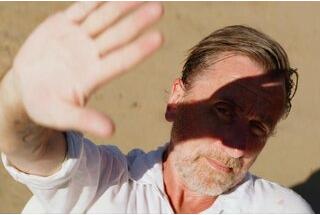Cinematographer Céline Bozon talks about his work on "La France" and "Un homme perdu" ("A Lost Man")
interview by François ReumontWhat kind of picture did you go for on La France, a film that takes place during the Great War ?
When my brother and I were talking, we very quickly went against any kind of contemporary picture. We wanted something very soft, with blacks that would not feel clotted and a picture that would be as little blue, as little metallic as possible. After the production validated this working basis during our meetings, we started working and preparing with Arane laboratory two months ahead of shooting. We contemplated different possibilities, such as flashing the film, but then Jean-René Faillot told us of a way to use the new Kodak Vision 2 HD film a bit against type.
This negative is originally an emulsion conceived in the sole purpose of digital transfer with a very flat Gamma curve. It is definitely not supposed to be printed onto positive film. Jean-René however had had a chance to see some images printed in order to check focus on a former, digitally processed project. My brother and I quickly grew enthusiastic when we discovered this unusual rendering.
Did you encounter any difficulties in the lab due to this unusual use ?
Indeed, we were not exactly taking the safest path through postproduction by making this choice. As the film was not being used in the regular manner, quite a few problems popped up – for instance, grading proved incredibly difficult. At any rate it was impossible to reach such a special rendering through traditional postproduction processes. But at the same time, here is a film where nature is the main setting, so as a photographer I had the luxury of having a set that would always remain in the same range of tones. The film’s three primary colours – those of nature, of the sky ble uniforms and the carnation of the actor’s faces – made for a much more manageable formal universe than on other films.
Did you shoot in Super 16 ?
No, we shot in 3 perforations 35 mm. As Vision 2 HD is only sold in S16 mm in France, we had to import it directly from the US. I find the 35 mm rendering very refined onscreen, maybe even more so than the 5218 (vision 500T), keeping in mind that it is sometimes difficult to make a distinction between refinement and soft contrast… It is quite desaturated as well, which allows for very beautiful face rendering.
Other than this film, were there any other important decisions ?
I chose to juggle with two optical series : Cooke S3 for daytime sequences and Zeiss T2.1 for the many night scenes. The latter were also overdeveloped by a diaph. The reason behind this choice was to win back some contrast in night scenes and get heavier shades of black. As anyone knows, nothing scares a photographer more than the lack of black when you go out and shoot by night…
Un homme perdu has a completely different atmosphere…
Danielle wanted to shoot with very light means, especially regarding light. As the film draws its inspirtaion from the work of contemporary photographer Antoine d’Agata, I went for a photographic working spirit, for a documentary-like capture where frame and staging shape the picture much more so than light does. It was all about capturing a location’s atmosphere without much intervention in the light department, capturing accidents, apparitions… In the end, when I saw Danielle and Nelly Quettier’s editing work, I really found the same spirit there… all the while rediscovering random moments from the rushes I had completely forgotten about. Yet they were definitely printed !
How did the shooting go ?
In January 2007 we left for the Middle East with little equipment and a very small crew (a gaffer and two assistant cameramen). As always in this type of venture, special attention was given to location research. We then had to capture the richness of the locations and the numerous night atmospheres of the film.
To tell the truth, experience taught me that daytime scenes often require more equipment, staff and expertise than night scenes… The film was shot in Super 16 and went through HD post-production and digital grading at LTC. My only indulgence with such limited means was to defend my choice of a series of 35 mm Ultra Prime lenses. Considering the size of the negative, in my eyes it was essential to have quality lenses.
Where there any bridges other than artistic between your work and the techniques used by d’Agata ?
D’Agata often likes to use a frontal LED lamp to light faces and bodies in his night shots. This is one of his photographing secrets ! We decided to use this technique in the film, perusing the exact same model as his lamp. Some of the sequences, as for instance the first scene in the hotel room, were shot with that sole lighting.
The onscreen result is a kind of center spot effect (with a light center and a grading rim) similar to what a photographer would obtain by “making up” a print. This effect we also used in digital postproduction where we would use a mask to darken the edges and brighten the center of the picture.
(Interview conducted by François Reumont for the AFC and translated from French by Mathilde Bouhon)
 En
En Fr
Fr





